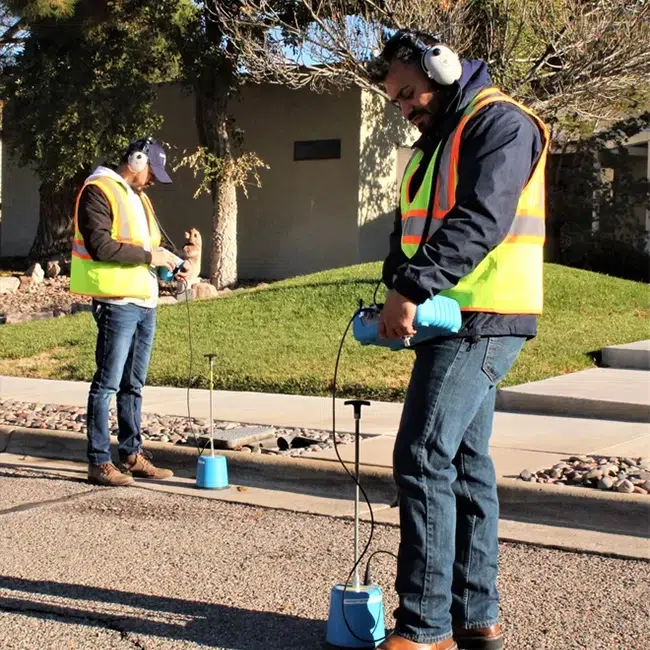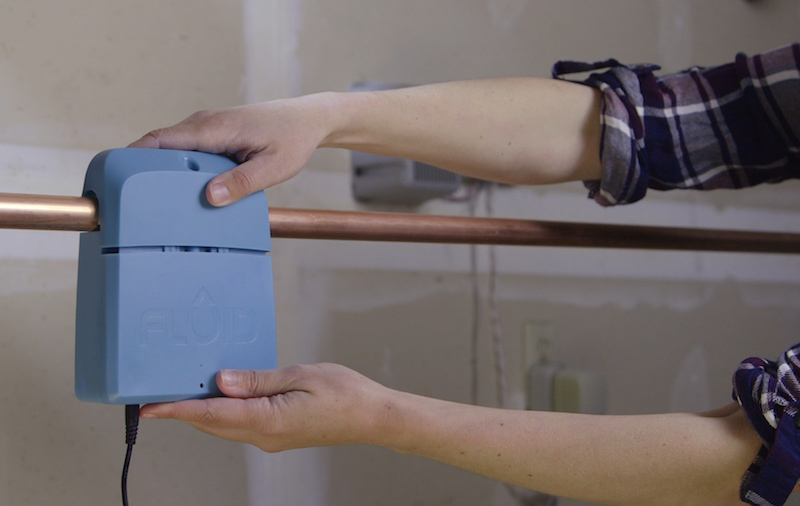Cutting-edge Solutions for Early Discovery of Water Leaks in Structures and Facilities
As the honesty of buildings and framework is vital, the obstacle of early discovery of water leaks has actually spurred ingenious solutions that guarantee to revolutionize the method we guard against prospective problems. From advanced leakage detection innovations to the release of IoT sensors for real-time tracking, the landscape of leakage prevention is progressing swiftly. Artificial intelligence algorithms use a peek into the future of leakage forecast, while thermal imaging offers a non-intrusive approach for identifying surprise leaks. Automated water flow analysis systems are improving just how leakages are determined and addressed, leading the way for a proactive strategy to water leakage detection. Each of these options holds the vital to guaranteeing the dependability and long life of our constructed environment, motivating a shift towards an extra lasting and efficient future.
Advanced Leakage Discovery Technologies
Advanced leakage detection modern technologies, furnished with advanced sensing units and algorithms, play a crucial duty in swiftly recognizing and identifying water leakages in various setups. Electromagnetic sensing units can identify modifications in electromagnetic fields created by water, using yet another layer of leak discovery ability.

IoT Sensors for Real-Time Monitoring
In the realm of modern-day water leak detection, the combination of IoT sensing units for real-time surveillance stands for a pivotal development in improving positive leakage discovery capacities. These sensors provide constant tracking of water supply, providing real-time data on water flow rates, pressure variations, and temperature modifications. By leveraging IoT modern technology, these sensing units can identify also the tiniest abnormalities in water use patterns, making it possible for early identification of potential leakages prior to they intensify right into significant concerns.
IoT sensing units send information to a central system, where advanced algorithms analyze the information and create signals or alerts when abnormalities are found. This real-time surveillance capacity permits homeowner or center supervisors to without delay resolve leaks, lessening water damage, reducing repair work costs, and saving water resources.
Furthermore, IoT sensors can be incorporated with structure management systems, enabling computerized actions to identified leaks, such as shutting down water shutoffs or triggering pumps to mitigate the influence of leaks. Overall, the execution of IoT sensors for real-time monitoring significantly improves the efficiency and performance of water leak discovery in structures and infrastructure.
Equipment Knowing Algorithms for Leakage Prediction

One trick benefit of utilizing machine understanding for leakage prediction is its capacity to constantly discover and improve its precision in time. As even more data is collected and fed right into the algorithm, it can improve its predictions and adjust to altering conditions, eventually enhancing the integrity of leak discovery systems.
Furthermore, artificial intelligence algorithms can aid in identifying refined signs of leakages that may go undetected by standard monitoring approaches. water leak detection. By evaluating intricate data embed in real-time, these algorithms can give early cautions and notifies, allowing for timely intervention and preventative maintenance to minimize potential water damages and associated expenses
Utilizing Thermal Imaging for Leak Discovery
Thermal imaging innovation supplies a promising technique for discovering water leakages in different systems and frameworks. By utilizing infrared radiation and temperature level variances, thermal imaging video cameras can recognize surprise leaks that are not easily noticeable to the nude eye. When water gets away from pipelines or structures, it usually alters the temperature of the bordering area, creating temperature differentials that thermal cams can capture. These temperature level irregularities are after that equated into visible images, highlighting the precise place of the leakage.
Among the crucial benefits of thermal imaging for leakage detection is its non-intrusive nature. Unlike typical approaches that might need burglarizing wall surfaces or floorings to find leaks, thermal imaging enables for non-destructive testing. This not only conserves time and lowers click here now expenses however that site likewise reduces disruption to the structure or framework being examined. Furthermore, thermal imaging can rapidly scan huge locations, offering an extensive overview of possible leakage sources in a timely fashion. Generally, making use of thermal imaging technology boosts the effectiveness and accuracy of water leakage detection, making it a valuable tool for keeping the stability of buildings and frameworks.
Automated Water Circulation Analysis Solutions
How can computerized water flow evaluation systems revolutionize the discovery and management of leakages in various systems and frameworks? Automated water circulation analysis systems use a proactive technique to leakage detection by continually keeping an eye on water flow rates and patterns. By developing baseline data, these systems can promptly identify variances that may suggest a leakage, enabling timely treatment to avoid substantial damages.
These systems utilize innovative algorithms to evaluate real-time data and provide prompt informs when anomalies are discovered, permitting speedy action to be taken. Furthermore, automatic water circulation evaluation systems can be integrated with building administration systems or IoT systems, boosting overall efficiency and allowing remote monitoring capabilities.
Furthermore, the data collected by these systems can be used for anticipating upkeep objectives, aiding to determine prospective weak factors in the facilities before a knockout post leaks occur. Overall, the implementation of automated water circulation evaluation systems can dramatically boost leakage detection and monitoring methods, eventually resulting in cost savings, decreased water waste, and boosted sustainability in buildings and infrastructure.

Verdict
Finally, the integration of advanced leak detection technologies, IoT sensors, device discovering formulas, thermal imaging, and automatic water circulation analysis systems uses ingenious options for very early detection of water leaks in buildings and infrastructure. These technologies enable real-time surveillance, forecast of leakages, and effective detection methods to avoid water damage and wastage. Applying these solutions can aid in keeping the stability and sustainability of water systems in various settings.